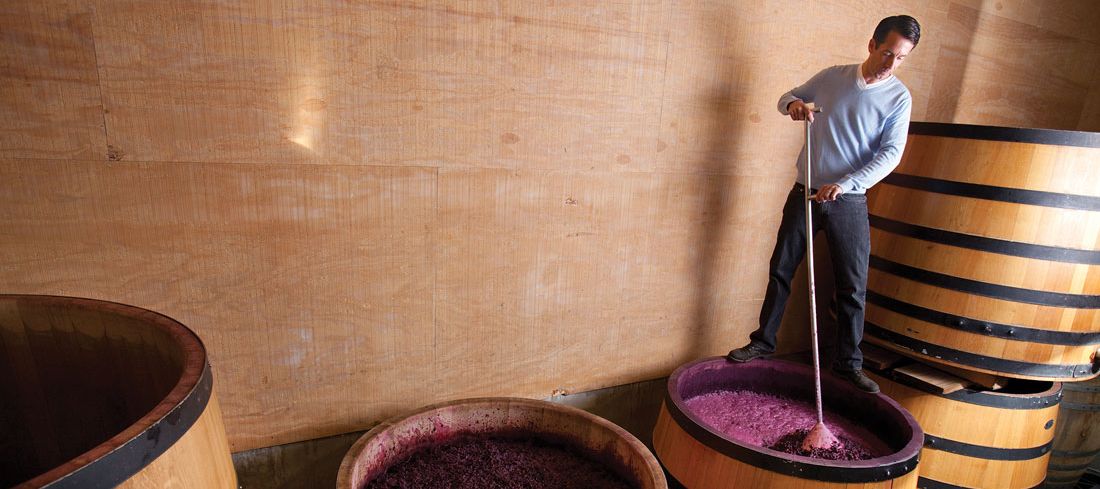Angela Jaquette has it right: If you want to immerse yourself in an unforgettable wine experience it’s hard to beat the adventure and fun of barrel tasting. It’s up close and personal with the winemaker showing off wines in progress. You’ll sip and savor wines that are rough, brash, bitter, harsh with tannins not yet tamed, full of particulants, and not anything like they’ll be after maturing in their oak barrels and being bottled.
But what fun.
In barrel tasting, you’re experiencing a gawky teenager growing up. It’s awkward, unsettling, and a wonderful insight into your wine’s evolution to maturity. “They’re always brats when they start out,” explains Juan Pablo “JP” Valot, the Italian-Argentinian head winemaker at Silvan Ridge Winery. It’s his job to guide these kids to adulthood.
Barrel tasting is a necessity for the winemaker, and a way to sell “futures” to wholesalers who buy wines early at discount prices, based on what their tongues and noses tell them at barrel sample time.
We lay lovers of wine can deal in “futures,” too.

“I can’t think of anything more romantic,” says Jaquette, the vice president of operations at Silvan Ridge. “You go back to the barrel room, sit in the midst of all those oak barrels with the winemaker, and sip wines at various phases of their aging. It’s awesome.”
The “futures” payoff comes later. When you have experienced your favorite wines as screaming, unpredictable adolescents (at barrel tasting), and then enjoy them after being bottled, “you’ll have a deeper appreciation for what you’re drinking,” Jaquette says. “There’s nothing like opening a bottle of your favorite wine knowing you’ve tasted it in the barrel as it was evolving. It brings a special excitement to the experience.”
To show what a difference a year in the barrel can make, Valot provides a sample from a 2013 cabernet, two-and-a-half-years in oak. It’s almost ready for bottling. The mouthfeel is full, finished, and the wine smooth and rich. Then comes a 2014 cab, fruit from the same Rogue Valley vineyard block, but a year less in oak. That one is harsh with tannins raging. “It isn’t so soft, but use your imagination and you can sense what it will be in a year from now,” says Jaquette.
“Once you buy the bottle, you can continue the process,” reminds Valot. It depends on the wine, but often he’ll recommend not uncorking some of his dark reds for up to a year or more to draw out even more flavors as they mature in the bottle.
Public barrel tasting catching on
“About half the wineries in Oregon now offer barrel tasting as a regular part of their (sales) program,” says Michelle Kaufmann, communications manager for the Oregon Wine Board. “People are discovering that tasting out of barrels is a treat. It’s a unique and intimate way to experience your wine as it evolves.”
For wine lover Rod Morris, a longtime local high school teacher who now runs Oregon Travel Adventures, barrel tasting offers an intriguing insight into the winemaker as an artist and scientist.
“Valot is a great example,” Morris says of his favorite local winemaker. “He starts with a vision in his head of what he wants to do with each of his wines. He’s very intuitive. But the lab side comes through, too, as he guides fermentation. Barrel tasting gives you a glimpse into this amazing world.”
Benton-Lane Winery owner Steve Girard, like Valot, is a local winemaker who prefers French oak. Both have their own coopers (a craftsman who makes the barrels) in France whom they trust with selecting just the right oak.
“I’ve bought barrels everywhere: American, Russian, Georgian, German, Austrian, Hungarian,” Girard says. He even gave his own homegrown estate oak a try. “I really wanted that to work but it didn’t. With colder temperatures in the middle of France we can get a denser wood, so the release of flavor ingredients from the oak is slower,” he explains. “The barrels can really nicely bring out the flavors that originate in the grape skin. What’s really fun is taking one wine and putting it into 10 different barrels. Each will come out totally different.”
How best to plunge into barrel tasting?
Consider Scott Byler’s “winemaker’s lunch” at Saginaw Vineyard. It’s for parties of eight visitors or more. The veteran grower in this Cottage Grove–area winery starts you off with a glass of wine, then takes you into the vineyard to talk about hands-on stuff. “Then we tour the barrel room,” he says, “and I’ll usually pour three vintages and let you get your head around what barrel tasting is all about.”
Barrel tasting is increasingly a marquee event at wineries during the big Thanksgiving and Memorial Day holidays. But it can take place anytime, especially with dark reds that joyously age in the barrel for up to three years, unlike pinot noir, which is usually out in a year.
At Ray Walsh’s popular Capitello Wines Tasting Room in the Whiteaker neighborhood, patrons can have a remarkable taste contrast between his Capitello label Pinot Noir Marlborough, New Zealand (his native country) aged in spicy oak barrels from trees in the Vosges Forest of eastern France. Then, going over to the subtle, elegant side, one may sip his Pinot Noir, Oregon, barreled in wood from a forest in the south of Burgundy, France, called Châtillon with tighter grain that allows “prettier floral notes,” Walsh says. It’s a great contrast—bold and rich, then complex and elegant. The oak barrels play a crucial role.
Check your favorite winery. The winemaker might be delighted to set up a barrel tasting for you. Well worth it!
Check with your favorite winery. The winemaker might be delighted to set up a barrel tasting for you!
Benton-Lane Winery
23924 Territorial Hwy., Monroe
541/847-5792
Capitello Wines
540 Charnelton St.
541/520-3092
Silvan Ridge Winery
27012 Briggs Hill Rd.
541/345-1945
Saginaw Vineyard
80247 Delight Valley School Rd., Cottage Grove
541/942-1364


